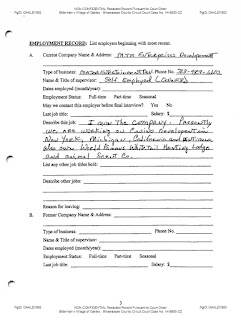1.21.2012
By Karl Grossman
The current issue of New York magazine speaks of Governor Andrew Cuomo seeking “gambling everywhere.” That’s a bit of an exaggeration. In his recent State of the State speech, Mr. Cuomo called for a change in the state constitution to allow for non-Indian, off-reservation casinos in New York, which currently prohibits them. It’s not “gambling everywhere” but the governor does want a major expansion of legalized gambling.
“Cuomo Bets On A Casino” was the headline in Newsday. It referred specifically to Aqueduct Racetrack in Queens as a place where the governor wants to see a big casino.
A casino there would be a problem for the Shinnecock Indian Nation, which wants to build a casino at nearby Belmont Park in Elmont. Newsday quoted State Senator Jack Martins of Mineola as saying a casino at Aqueduct would “effectively kill” plans for a Shinnecock casino at Belmont. A broader concern is whether or not the legalized gambling market is being saturated by casinos opening all over the nation, -Native American and non-Indian.
Mr. Cuomo is betting on a big financial boost for New York State through a major expansion of legalized gambling here but the market has its limits.
The day of Mr. Cuomo’s State of the State speech, the New York Times reported on the “hopes of reviving Atlantic City.” Gambling revenue was down in Atlantic City, the Times reported, and there’s hope that a new $2.4 billion resort and casino, being built with state financial help, will “usher in a new era for Atlantic City.”
“Atlantic City has been in decline since 2006,” the Times reported, “when Pennsylvania opened its first casino, beginning a slow bleed of gamblers that have never returned. With rival casinos opening in Connecticut, Delaware, Maryland and upstate New York, there is little Atlantic City can do to stop the loss …”
This spread of gambling has not only hurt Atlantic City but Las Vegas, too, and severely. Factor in the impact of the recession on gambling and it would seem the industry is in trouble. So how can New York State figure on a big win?
But that’s the dream -or illusion-, not only in New York but other areas of the nation. A Times story last month reported on the Florida Legislature considering three “Las Vegas-style casino resorts” in south Florida to offset the economic downturn following the burst of Florida’s big real estate bubble.
Meanwhile, what about gambling as a way for Indian tribes to break out of centuries of economic hard times? That was the basis of the Indian Gaming Regulatory Act of 1988, the federal law that set up a system under which Native Americans were given the go-ahead -and structure- to develop gambling.
It was a kind of long-delayed reparation for Native Americans for the loss of their homeland and culture and it has made some tribes-, including several in Connecticut-, super-wealthy.
These days, if you take a drive on the stretch of New Mexico between Albuquerque and Santa Fe, you’ll come upon a gambling casino every few miles, in front of each Indian pueblo, with few cars in their parking lots. And in recent years, with non-Indians being allowed to get into gambling elsewhere, it’s not just intra-Indian competition that’s diluting the market.
Although legalized gambling had to come, it’s a problematic activity for society. There are the high-rollers at casinos in Las Vegas and Atlantic City and Connecticut. My impression of the bulk of bettors, however, is that they are desperate people who mostly play the one-armed bandits, dumping in their quarters, hoping for a bonanza.
For society to benefit by drawing money from legalized gambling- as it cannot from illegal gambling- is one thing. But to promote it, subsidize it and depend on it is another.
Then there’s the over-expansion, and the consequent cost to Native Americans including the Shinnecocks, who have had it tough economically for centuries and only recently achieved federal tribal recognition. They had been hoping for some payback, finally. Now the house may be rigging the game against them.














